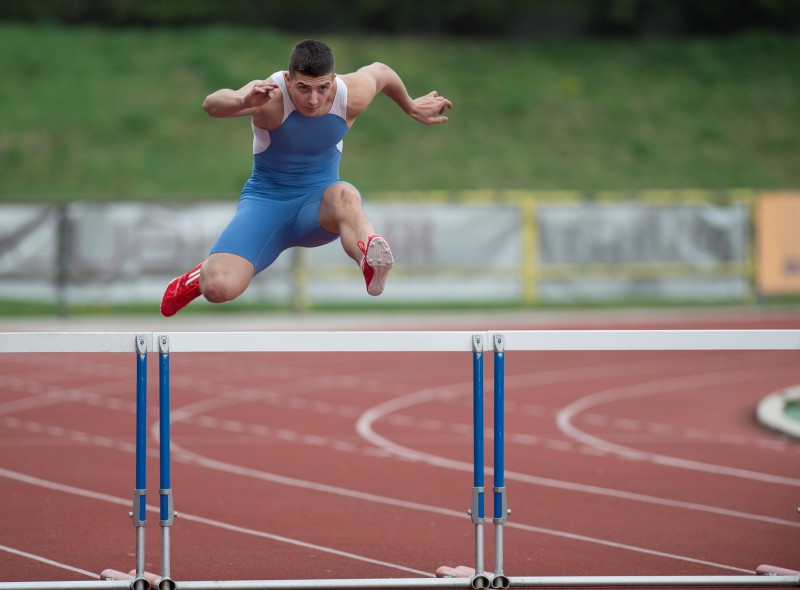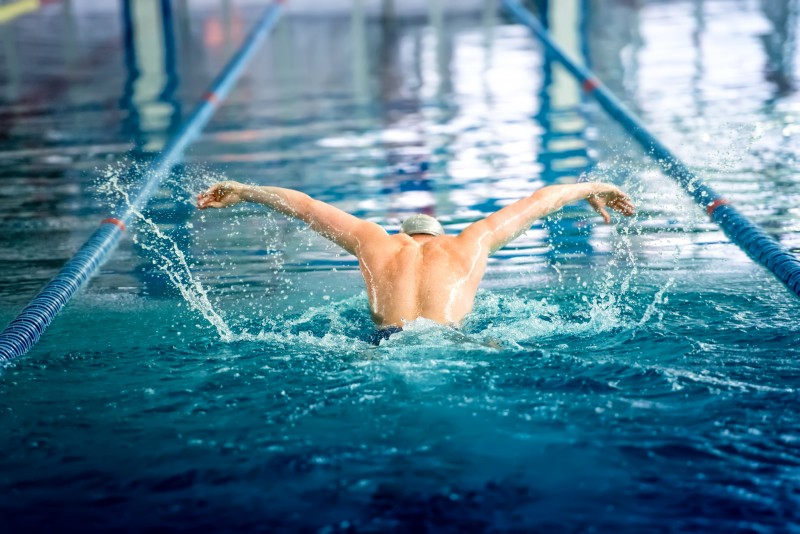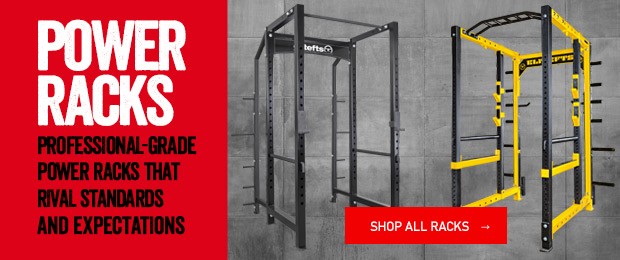
In this column, we move on to question number four of this series of questions from a new strength and conditioning intern. Again, I really liked this question – even though I was not exactly sure as to the specifics of what he meant. Luckily, I have a whole column to explore this question and explain my answer to the fullest. So, let’s get started – here is question number four of the five original questions:
What, in your opinion, are three undervalued and underutilized tools for coaching athletes? What are the three overused and non-productive methods when coaching athletes?
Another great question, but I found the word “tools” to be a bit vague. I do believe that I get the gist of what he was asking, however. Just in case, I think I will add a few more than three, just to cover all my bases, and because so many pop into my head right off the bat. This question touches an area of athletic strength training that I have been thinking about since I started powerlifting. I came from a sports background, where even though I loved strength training itself, I mostly lifted to improve in my sport. When I fully shifted to powerlifting and really began learning about strength, I just kept thinking about why I never got any of this information when I was an athlete. Then, whenever I had the chance to work with athletes, I was quick to test my new knowledge on those athletes; the results never let me down.
RECENT: The Necessity of Olympic Lifts for Athletes
I would say that the first three things that popped into my head when I read this question were: rooting, bracing, technique. This was quickly followed by: recovery sessions, dynamic method/accommodating resistance. Of course, the more I thought about it, the more things I came up with – but I stand by these being five of the biggest concepts because of the tremendously strong base they create. So, let’s just run through them in the order in which I typed them. Rooting is one of those concepts that is so simple but so effective, that you can’t believe everyone doesn’t already do it. Still, I find that most lifters and trainers never even think about rooting. The feet literally are the base of athletic movements, and even of lifting movements.

Image credit: Peter Bernik © 123rf.com
Due to modern footwear, our feet have gotten less mobile and weaker than they should be. This is because we tend to rely on our shoes for support, causing our feet to lose the strength, flexibility, and mobility that they need to perform their best. Then, when we do ask them to perform, they can’t get into or maintain the proper positions to transfer power through the body as efficiently or strongly as they should be able to do. Rooting teaches athletes to get their feet and ankles in the right position when lifting. Over time, the body recognizes and gets used to this, and it becomes a habit that transfers over to the athletic field. Another benefit of rooting is how it better connects the body to work as a whole. When one joint is out of place, it can affect the strength throughout the body – and vice versa when it is in the right position. This works with how the muscles are flexed and also in what order they do so. When an athlete engages in rooting, their posterior chain activates and contracts harder than if they do not root at all. Rooting in the gym puts the athlete’s body in a better, safer position by leaving less chance of injury or damage to joints. It allows the athletes to contract stronger and get more work out of the muscle that they are training. It also trains the body to want to be in that position when stress is put on it, which helps the athlete perform better on the field. For more in-depth information about rooting, check out this article from my column.
Bracing is right along the same lines as rooting. It plays a major role in the strong foundation of a lifter and athlete. Like rooting, it is another simple concept that has so much power behind it, but I see it gets overlooked or done incorrectly way too often. Proper bracing makes the structurally weakest area of the body strong, so that power can be transferred through it into the ground and/or weights without loss of that power going elsewhere. Similar to rooting, a proper brace also allows the rest of the body to contract stronger. We need to remember that the body is a whole entity; everything affects everything else. Proper bracing also greatly diminishes risk of injury to the back, and as I discussed earlier in this series, injuries are one of the biggest setbacks to both lifters and athletes. Just like with rooting, bracing becomes habit that transfers to the field. So, this simple task that helps us lift more will also help us transfer more power, be safer, and perform better on the field. For more in-depth information about bracing, check out this column I did on bracing.
I will never get tired of talking about and showing proper technique. Unfortunately, I continue to see technique get butchered by so many lifters and coaches. I don’t understand why they cannot see just how important technique is, and why they will not learn to perform and coach it. When a lifter or athlete has bad technique, they may not be working the muscle that they are actually intending to work. Even if they are, then they are probably not getting the optimal amount of return on the work that they are putting in. They are leaving themselves more susceptible to injury (again, the biggest way to set back an athlete). When technique is bad, it makes it almost impossible to truly address weaknesses, which again sets back potential progress. Proper technique, like rooting and bracing, teaches the body the strongest position, which then becomes habit on the field. Proper technique in the weight room sets the athlete up for success, whereas poor technique sets them up for failure. At best, it decreases the potential progress that they should be making.
Next on my list is going to be recovery, or recovery sessions. I think there has been a huge misconception that recovery is passive. This is something that I just keep seeing, but in actuality, it could not be further from the truth. We need to start thinking “active” when we think about recovery. In more athletic terms, let’s say recovery is offensive, not defensive. Recovery is another tool in our toolbox that we can use. It seems like there are many athletes and trainers that see the gym as only a place to get stronger, but it can be much more. Recovery sessions in the gym can greatly speed up recovery from lifting sessions or training sessions on the field. For that matter, they could also be a great warm-up for training on the field – they can even be both at the same time. I actually rate recovery above training in terms of importance. I believe that lifters, coaches, and trainers need to change how we look at recovery. Check out these articles (including some past articles of mine) with similar topics this subject: over-trained vs. under-recovered, recovery training, and perceiving under-recovery for overtraining.

Image credit: Bogdan Mircea Hoda © 123rf.com
Dynamic or speed training, also known as force training, is definitely a tool that I feel is underutilized for athletes. In fact, I think it is probably more important for athletes than powerlifters (and I think it is very important in powerlifting). The simple equation of force equals mass times acceleration is pretty hard to argue with. Athletics are all about force production, so why on earth wouldn’t you incorporate speed/dynamic work into training? Every athlete needs to be explosive to some extent. Yes, it will vary for each individual sport, and even to some extent each individual athlete, but this is very easy to modify to meet all situations and athletes. I think one of the biggest things that irritates me about this, is that a lot of coaches will agree that they need to train speed – so they do running drills or work the Olympic lifts. This is such a narrow view and understanding of speed work, and of speed itself. Accommodating resistance completely takes out the deceleration of a movement. When I incorporated this with everything else that I have been talking about, it teaches the athletes so much. To the point that I can drop athletes 40 times, just by lifting weights – who would have thought? All the other highly respectable trainers have their athletes do this!
I can go on and on about the things that I think trainers and coaches should use more, but I can only make this article so long. Let’s move on to the things that I think are overused or overrated. First, I would have to say general bodybuilder 3x10 programs. Nope, let’s just break that down into “most old school training programs”. Yes, for decades athletes have made gains doing it this way – but there are better ways now. I have done plenty of 3x10 general strengthening, and I have gotten stronger. To this day, I do most of my supplemental stuff that way, but it is only a small portion of what I have going on in the program. I think 5x5 has its place, but again, there are lots of new and improved ways to train. I am not a fan of working hypertrophy with athletes, because they only have so much time in the weight room; I am way more concerned with their strength. If they need more size, they can eat more – and if the strength program is good, they will gain more muscle. I prefer to break strength down into max effort, repetition, and dynamic. All three of these areas need to be worked, and can be worked simultaneously in one program.
There are many different speed schools out there now, and they seem to have great popularity. I am willing to admit that they do have a benefit, and definitely have their place, but again I feel they are overused. Such that I have seen programs cut back on or put less emphasis on weight training in order to give more to the speed school type training. In my opinion, this is a huge mistake. The fastest and best way to increase speed and agility is to increase force production. The fastest and best way to do this? You guessed it: weight training!
I tend to think in terms of what will work best, and don’t really spend too much time focusing on what doesn’t work. For this reason, the second part of this question was a bit tough on me, so I kind of went with things that just irritate me. This last one is very specific (and I have been seeing it so much lately): single box jumps. Again, I do think these have a place, but damn, it seems like everyone is doing them all the time. Plus, everyone seems to get so amazed by them. Yes, I have seen some crazy box jumps that impress me, but the very next thing I think is, “What is their actual vertical jump?” I don’t really see how a single box jump converts into success on the athletic field. I also feel like single box jumps are not actual plyometrics; I feel like the time spent messing around with them would be better-served actually doing multiple, plyometric box jump training.
So, another question answered, and another column written – four questions down and one to go. Tune in next time as I answer the last question, and try to wrap this series up with nice, pretty bow!










